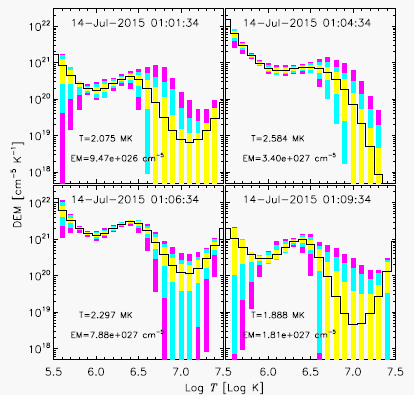Using the observations from SDO/AIA and IRIS/SJI, we explore the bi-directional moving structures in a CBP at multi-wavelengths, i.e., 7 AIA EUV and 2 SJI FUV bands. This CBP takes place at NOAA 12384 on 2015 July 14. It has a lifetime of about 10 minutes and exhibits a curved shape. AIA and SJI imaging observations with high temporal resolution show that there are many bright structures moving intermittently from the CBP core outward two sides. From the time-distance slices along a curved slit, these moving structure are identified as the bidirectional flows toward northwest and southeast simultaneously. These moving structures are characterized by the bi-direction, simultaneity, symmetry, and periodicity. In our results, all the features (including the bi-directional flows and their periodicity) can be detected simultaneously at all the 9 wavelengths. On the other hand, HMI observations show that a flashed positive field emerges near the CBP core, and it moves close towards the nearby negative field, this CBP takes place between them. Our results support the magnetic reconnection model of the CBP and the bi-directional moving structures could be the observational outflows after the magnetic reconnection. 
By with LI Dong The DEM profiles of the CBP core (p2) at four times. The black solid profiles give the best-fitted DEM curves from the observations. The yellow rectangles represent the regions that contains 50 % of the MC solutions. The turquoise rectangles, above and below the yellow rectangles, and the yellow rectangles compose the regions that cover 80 % of the MC solutions. All of the colored rectangles form the regions containing 95 % of the MC solutions. The average temperature and EM are given. This work by Dong Li, Zongjun Ning and Yingna Su, has been published in Astrophysics and Space Science. Please see Astrophysics and Space Science Vol.361, No.9 (2016) for more detail: (http://link.springer.com/article/10.1007%2Fs10509-016-2893-y) |
